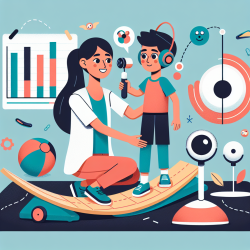Key Findings from the Research
The study assessed 96 students aged 7 to 18 years, half with normal hearing and half with SNHL. The researchers used several tests to evaluate static and dynamic balance, including the Romberg, Romberg-Barré, Fournier, and Unterberger tests. The results were compelling:
- Children with SNHL showed more changes in static and dynamic balance compared to their normal-hearing peers (p<0.001).
- The prevalence of balance issues was consistent across different age groups and sexes.
- For example, in the Romberg-Barré test, 77.1% of children with SNHL showed balance issues compared to just 4.2% of normal-hearing children.
Implications for Practitioners
These findings suggest that children with SNHL are at a higher risk for balance-related issues, which can affect their overall motor skills and quality of life. Practitioners should consider the following strategies to improve outcomes:
- Early Screening and Diagnosis: Incorporate balance assessments into routine evaluations for children with SNHL to identify issues early.
- Targeted Interventions: Develop individualized therapy plans that include balance training exercises. These could range from simple static balance exercises to more complex dynamic activities.
- Multidisciplinary Approach: Collaborate with other healthcare professionals, such as physical therapists and audiologists, to provide comprehensive care.
- Parental Involvement: Educate parents about the importance of balance training and provide them with exercises that can be done at home.
Encouraging Further Research
While the study by Melo et al. provides valuable insights, further research is needed to explore the underlying mechanisms of balance issues in children with SNHL and to develop more effective intervention strategies. Practitioners are encouraged to stay updated with the latest research and to contribute to this growing field of study.
To read the original research paper, please follow this link: Static and dynamic balance of children and adolescents with sensorineural hearing loss.
By integrating the findings from this research into clinical practice, practitioners can make data-driven decisions that lead to better outcomes for children with SNHL, enhancing their overall development and quality of life.










